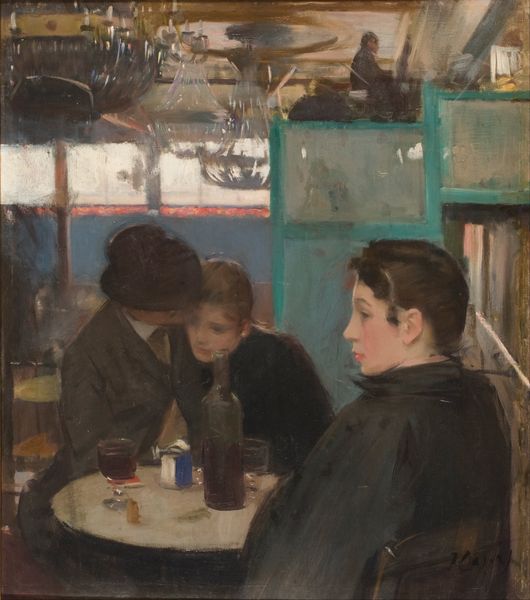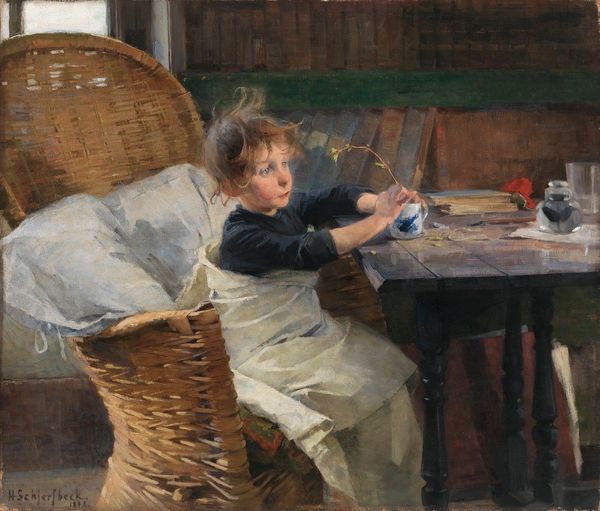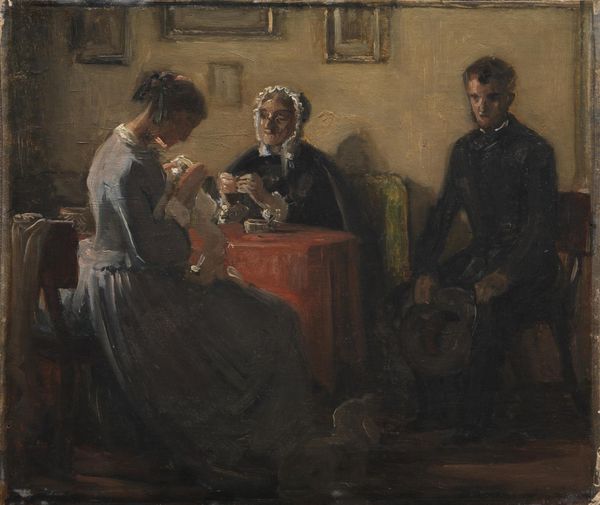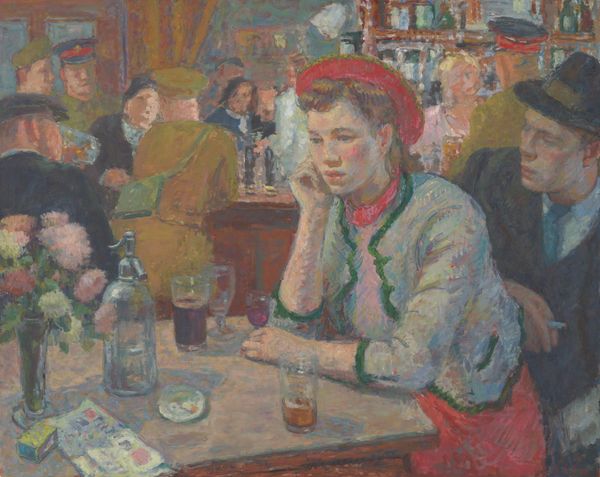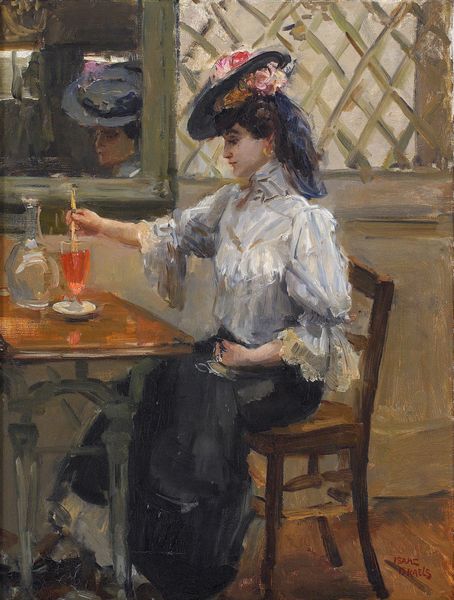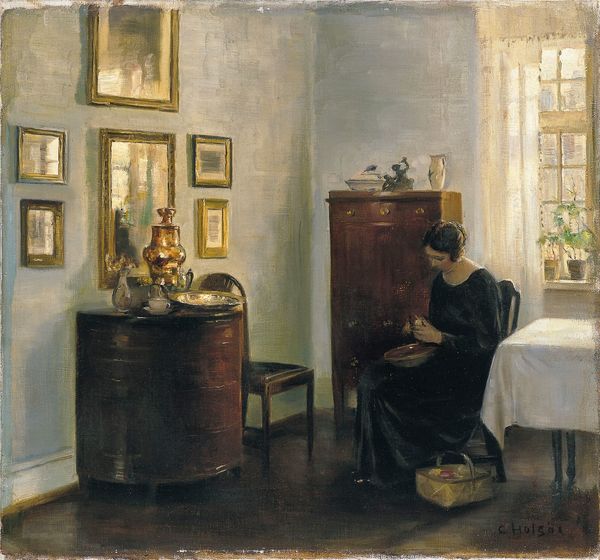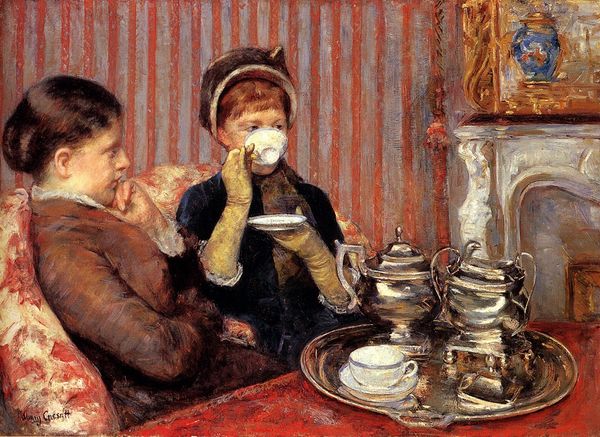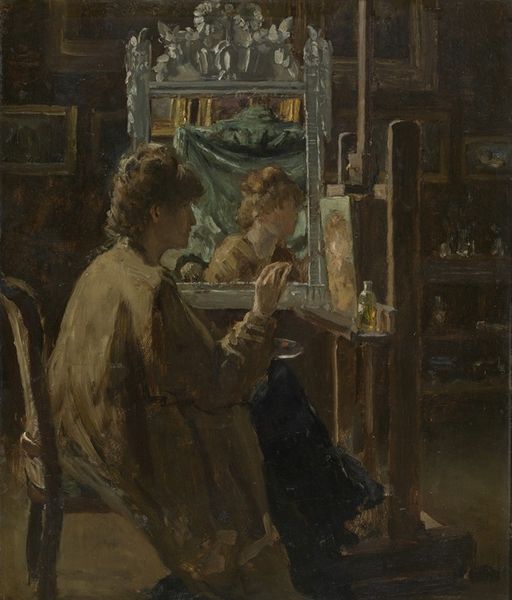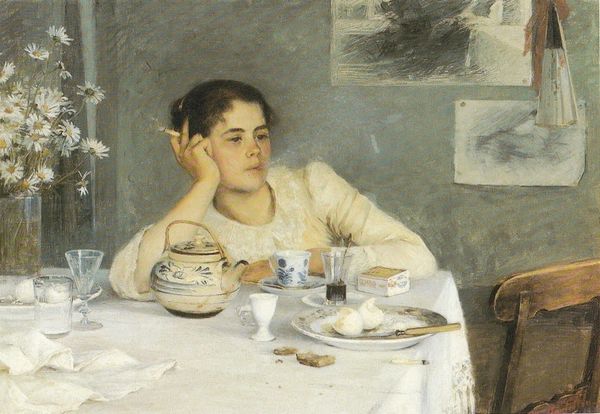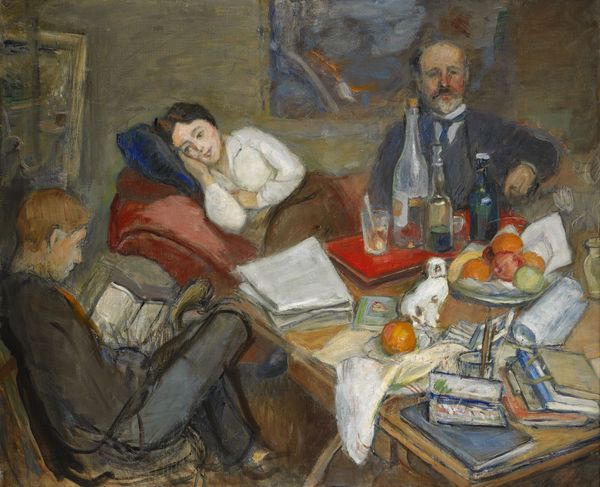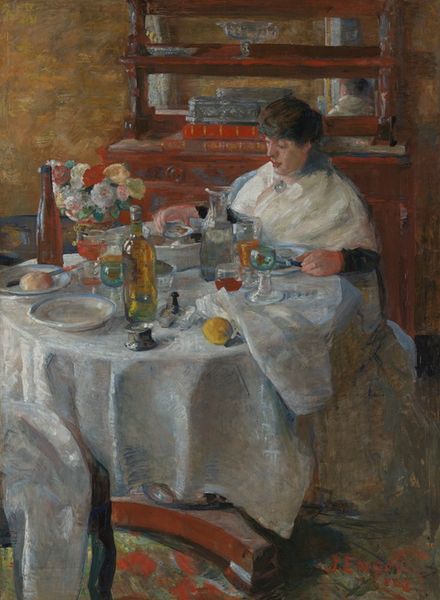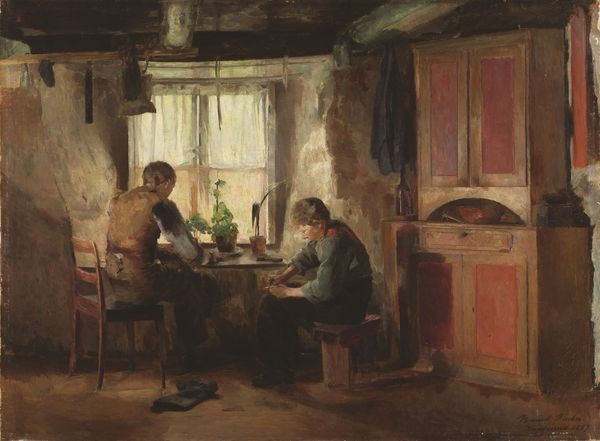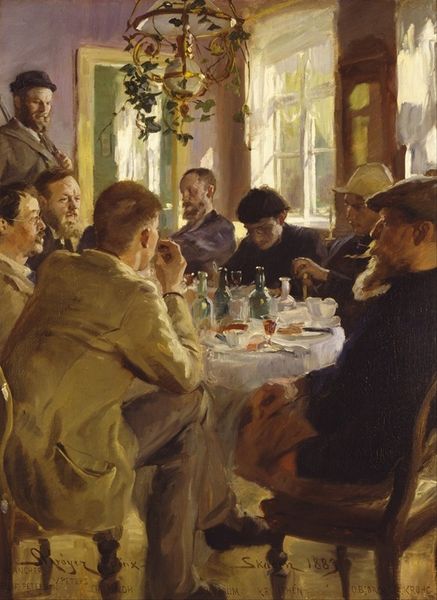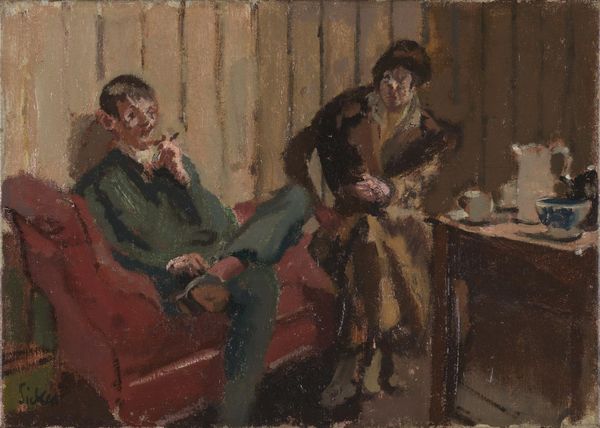
painting, oil-paint, glass, impasto
#
portrait
#
painting
#
impressionism
#
oil-paint
#
glass
#
oil painting
#
impasto
#
underpainting
#
painting painterly
#
genre-painting
#
facial portrait
#
portrait art
#
realism
Copyright: Public domain
Editor: So, we’re looking at “Seated Man at the Table,” painted by Elin Danielson-Gambogi in 1886. It's an oil painting and the thing that really strikes me is the contrast between the dark background and the brightness around the window. What do you see in this piece? Curator: I see a potent statement about societal expectations and the confined spaces allotted to individuals, especially marginalized voices, during the late 19th century. Look at how the male figure is positioned: confined in shadow, yet juxtaposed with objects like the bottle, the cigarette, and even the cup and saucer, all laden with implied narratives. What social roles do these objects play? Editor: I guess they show…comforts? Like, what a man in that time might enjoy in private? Curator: Exactly, but think about the social pressures. Public versus private spheres were heavily policed, particularly around gender and class. Alcohol, tobacco - what do these signify in terms of performative masculinity, but also societal anxieties regarding leisure, decadence, and male identity at the fin de siècle? Editor: That makes me think, is the brightness outside the window a metaphor, like hope or freedom? Curator: It could be read that way, but I also see it as a commentary on the artist's position. Danielson-Gambogi, as a woman painter in a male-dominated art world, might be subtly critiquing the structures that both define and confine this figure. His world is literally framed, just as her access to it was limited. Who has the power in this encounter and who controls representation? Editor: So the painting's not just *of* a man, but *about* the power dynamics of the time? Curator: Precisely! Art often functions as a subtle commentary on its own historical context. Looking closely at the subjects and materials allows us a far greater appreciation of societal forces. Editor: That completely changes how I see the painting; it's not just a simple portrait anymore!
Comments
No comments
Be the first to comment and join the conversation on the ultimate creative platform.
